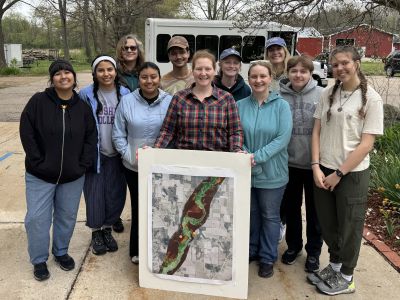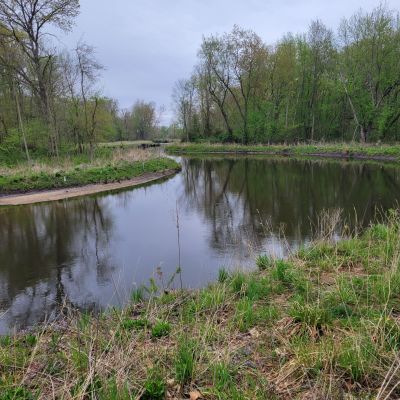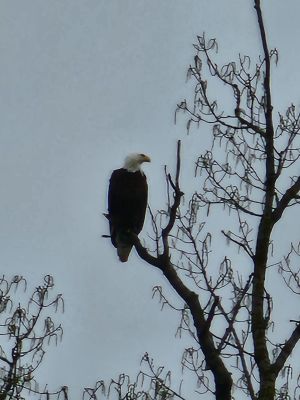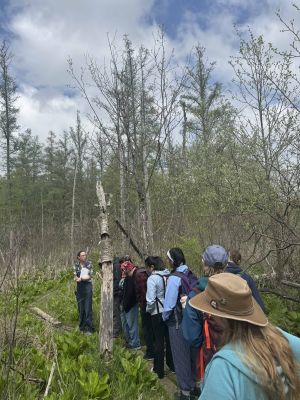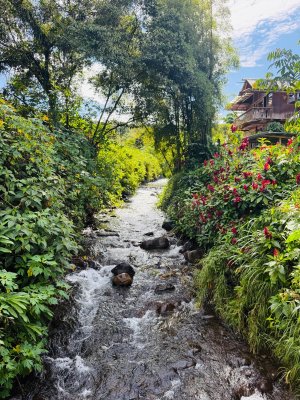Since being stationed in the town of Mindo for my service portion of SST, I’ve noticed a big cultural difference between U.S. Mennonites and Ecuadorian “Mindo-nites” – pun intended 🙂 approaches to life. There’s a palpable sense of serenity and...
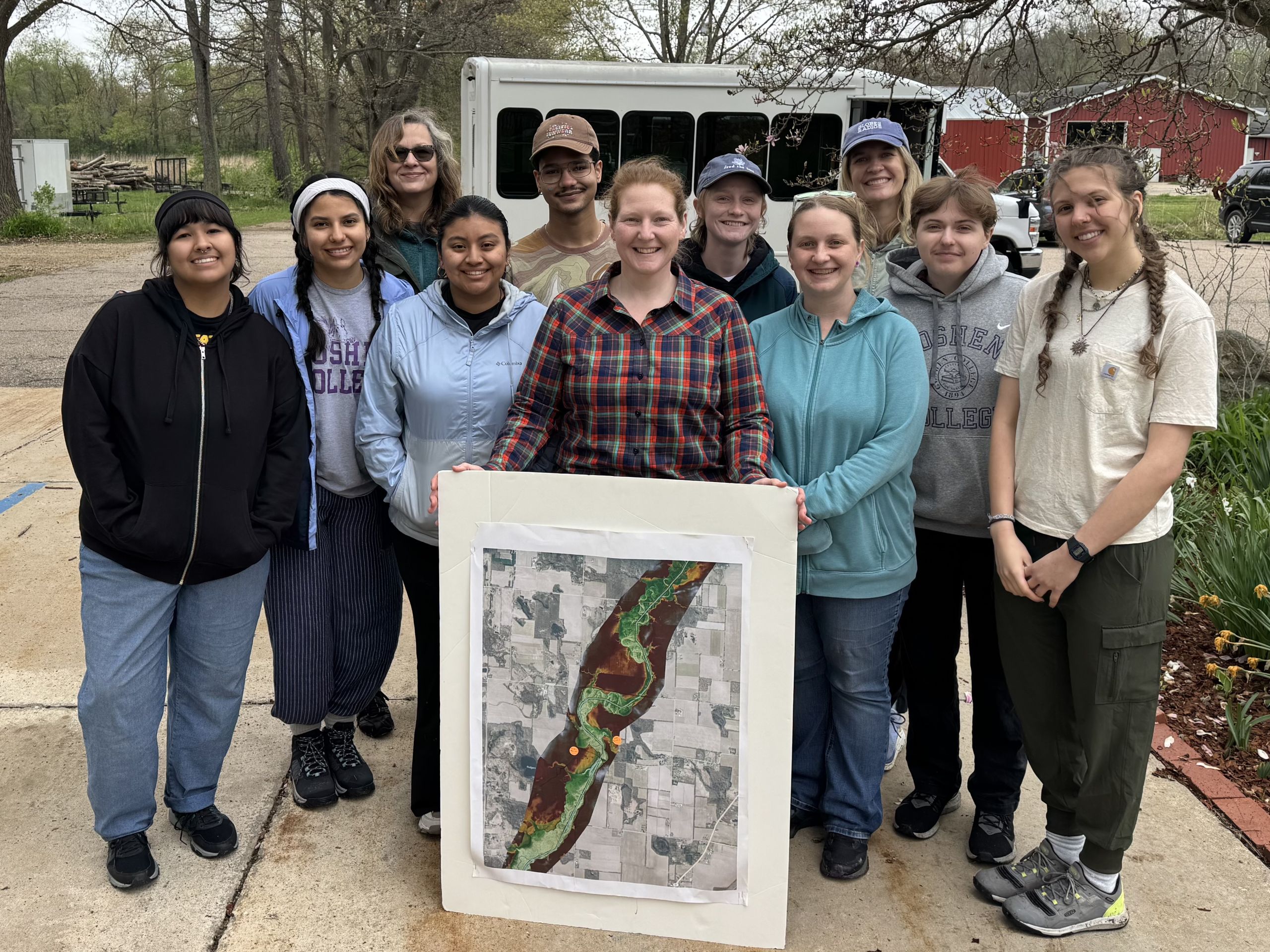
News
Restoring relationships with water and land
May 04 2025
By Rosemary Baer, sophomore art education major
We started our second full day with a morning hike through a portion of the Dowagiac River Restoration Project. While on our expedition we learned about the River re-meandering, saw lots of native and invasive plants, and interacted with some woodland critters. Our hike was led by the very knowledgeable Jennifer Kanine, director of the Kowabdanawa odë kė Team of the Pokagon band of the Potawatomi. Kowabdanawa odë kė means “they watch over the land” in Potawatomi language. The mission of the Kowabdanawa odë kė Team is “to conserve, protect, and promote the wise use of natural resources through planning, environmental stewardship, and agricultural initiatives which support stronger, healthier, and more sustainable lands that provide diverse opportunities for tribal citizens.”
They have been working since 2011 to restore a stretch of the Dowagiac River that flows through tribal land by returning it to flow within its historic meandering bends. The river was dammed, dredged, and straightened to drain surrounding wetlands for agricultural land. Since the restoration project started, they have restored a stretch of the Dowagiac River close to its historic meandering beauty!
While on our hike along the Dowagiac River, we were immersed in the beautiful plant and animal life of the area. We learned about how during the restoration process, sustainable efforts were used such as using coconut coir fiber to make soil shelves to create a gradual river bank so the critters could have an entry and exit into the water. We also saw baby willow trees that were used as living stakes to hold everything together. The restoration efforts have been so successful that different animals are returning to the area and making themselves at home. We were greeted by an enormous bald eagle who was not too pleased to have us so close to the nest!
After many tick checks and a few naps, we were then off to our second hike of the day. This hike was Camp Friedenswald’s Indigenous Histories hike on the Fen Trail led by Amy Huser, the director of sustainability and outdoor education for the camp. We started by gazing out onto Shavehead Lake, where Amy explained the significance of the name of the lake. Chief Shavehead was chief of the Cass County Potawatomi. Even though the lake is supposed to be named after the chief, no one knows his actual name. Shavehead is the name that has been given to him in our Western historical lens. As part of the camp’s repair work, Amy read different parts of the camp’s land acknowledgment, showed us maps of the area, and retold traditional Indigenous stories to us at different points throughout the trek.
We walked out to look over the water near the fen and intently listened to all those around us. Group member Jill Yoder pointed out a couple of different bird songs that we heard and Crystal Edson noted the distant sound of the toads in the forest. Along the trail, we learned about different native and non-native plants. We even got to sniff and munch on a few edible plants we found such as redbud flowers and garlic mustard leaves. The trail took us through several different ecosystems across the camp.
We ended our time out in the oak savanna, a very rare ecosystem within Michigan. Relying on intentional care from the human population, oak savannas used to be much more prominent. To have a healthy oak savanna, there need to be controlled burns to assist in the life cycle of the system. The burns allow more space for new plants to flourish in the coming season. The oak savannas are rare now because the Potawatomi people who lived in coexistence with this land cared for the savannas. When they were removed from their area and their natural relatives, the land suffered along with the people. It was very impactful to get to sit and interact with an ecosystem that was so meaningful to the Potawatomi people. I felt very lucky to be there, but also very sad that the people who have such a deep connection to the land weren’t in my place. Overall this was such an impactful experience.
